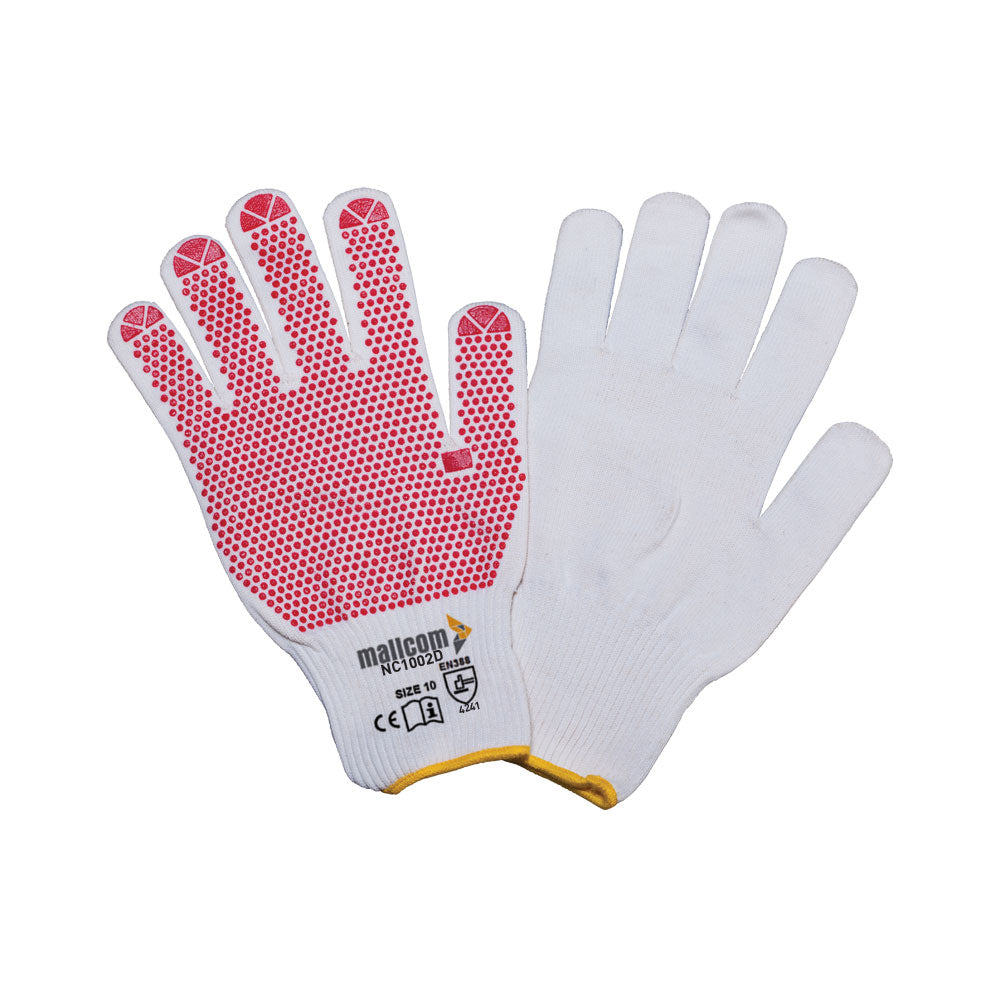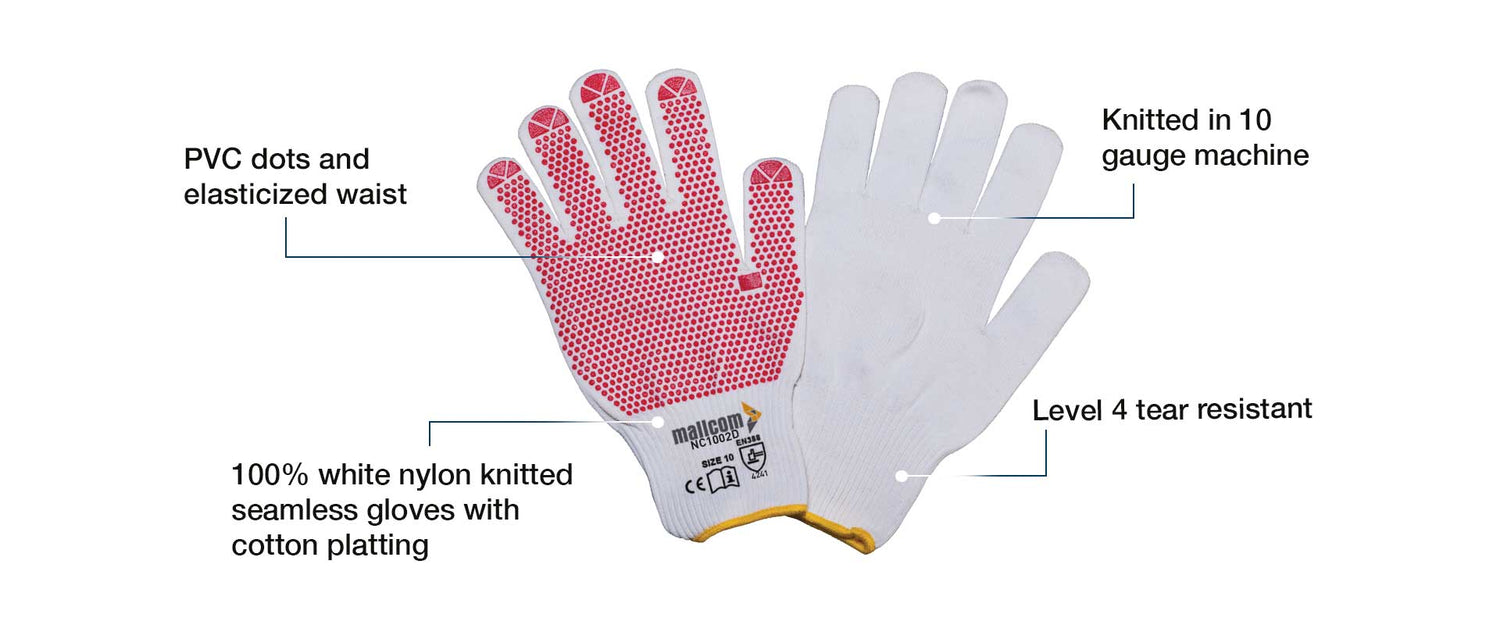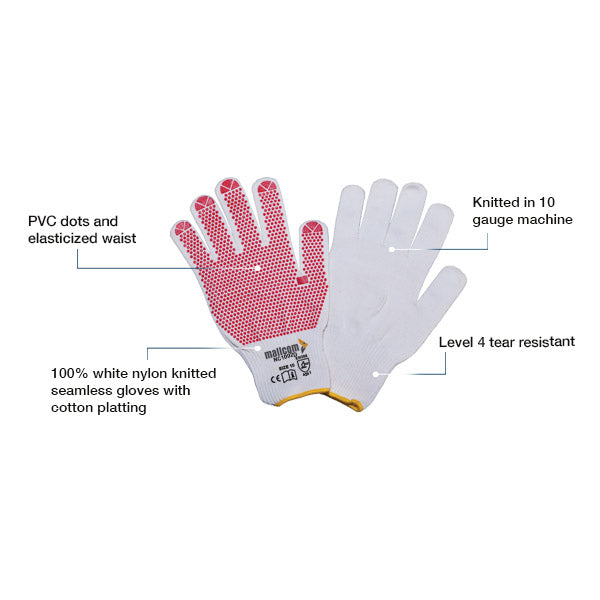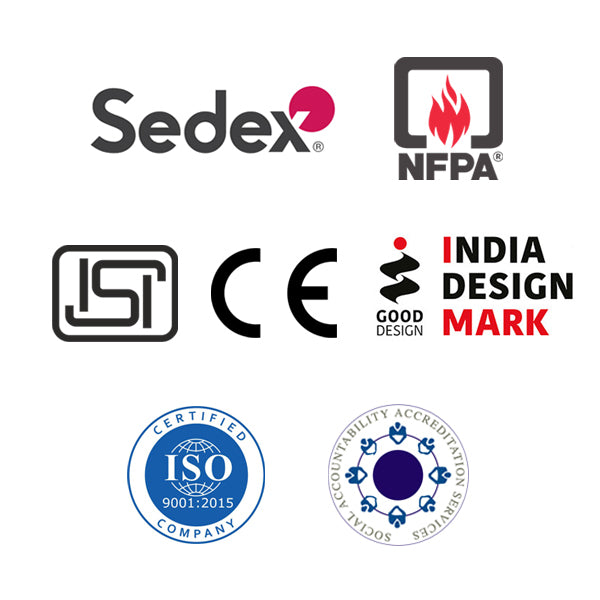NC1002D
Share
Knitted Gloves
- 100% white nylon knitted seamless gloves with cotton platting
- PVC dots and elasticized waist
- Knitted in 10 gauge machine
- Level 4 tear-resistant
- Lightweight gloves with excellent resistance to abrasion and enhanced grip particularly useful in chemical and oily environments.
Reinforced
Cut Resistant
Dexterity
Knitted Wrist
EN 388
Delivery & Services

Easy Return
with our 15 days return poicy
Regular price
Rs. 0
Sale price
Rs. 0
Regular price
Tax included.
Shipping calculated at checkout.

ABOUT THE DESIGN

USEFUL IN THESE INDUSTRIES
AUTOMOBILE
LOGISTICS
MAINTENANCE
MATERIAL HANDLING

Product Features
ABOUT THE DESIGN

USEFUL IN THESE INDUSTRIES
AUTOMOBILE
LOGISTICS
MAINTENANCE
MATERIAL HANDLING
Product Details
























